Book review by Wallace Wyss –
Tom Tjaarda, Master of Proportion by Gautam Sen
ISBN 978-1-85443-313-8
Dalton Watson, 2021
473 Pages, 825 images
$150 plus shipping
Tom Tjaarda: Master of Proportions from Amazon
Car books are traditionally much more about the cars than their creators. But this Indian writer, Gautam Sen, is getting into the background and motivations of famous designers and that’s a good thing.
He previously wrote, in 2016, Marcello Gandini, Maestro of Design, an 800-page study of the cars of Gandini. In doing so he set the standard for books about automotive designs and designers, a format where he gets the designer to describe each one of his masterpieces.
Then he did The Bertone Collection with Michael Robinson in 2018 which covered more of Bertone’s masterworks.
This new book, Tom Tjaarda, Master of Proportions, is not so weighty but follows the now set pattern where each, prototype or production car gets a few pages and Sen describes who or what who prompted the project, how it emerged. An interesting sidelight is, if it is known,
He tells what happened to the car after its show career, such as in this book a one off Pantera was sold by Ford and re-appeared at a Monterey auction where it was bought and restored by an Italian collector.
He also goes into the growing up of the designer though I think he wasted space with too many Tjaarda (pronounced JAAR-DUH) family pictures.
Really interesting, by contrast, is the politics behind some of the cars. For instance he recounts how Lee Iacocca flew in from Detroit to approve the life size model of the Pantera, and how crucial it was for Iacocca to succeed with the car at Ford. I had heard (from Tjaarda himself) that Ford agreed to buy and have built for them this car on the basis of a 1/5th scale model. Actually both stories are probably true–maybe Sen hadn’t heard the model story.
Tjaarda’s descriptions of DeTomaso the man make the book good reading. He paints him as a wily opportunist–pitting one automaker against another and revamping his offerings to suit one side or the other.
Being an American in Italy wasn’t easy for Tjaarda but in one poignant chapter he describes going back to the US to work and how bored he was, realizing he was now, after all, a European.
Going back to the Pantera, it’s a little sad Tjaarda wasn’t involved in the updates of the Pantera (post ’74 modes) but one humorous tidbit is when, 35 years after first owning one, Tjaarda bought a used one and up-dated the styling.
The other brands he developed designs for get shorter chapters, but one interesting thing is that, while he worked for Pininfarina, he did no less than three Ferraris, but Ferrari people hardly ever mention his name though he did more Ferraris than the most famous designer in Italy–Giorgetto Giugiaro.
The pictures are very well re-produced, and there’s even sketches that are original or have been recreated. If any book shows how cars were designed before CDC printers and five axis milling machines came into being, this is it.
Sen tells how Tjaarda worked for Giugiaro but never tells how Tjaarda felt, in a role so reduced compared to the man that got all the publicity.
Going back to DeTomaso again he tells what a political animal DeTomaso was. One wicked story told by Tjaarda was that DeTomaso was planning on introducing a woman as the Pantera’s designer because it would get more publicity than having a man be the designer. Fortunately Tjaarda got some advance publicity leaked out to journalists so his connection with the car was established before DeTomaso could pull that publicity stunt.
Sen tells how Tjaarda was also ashamed that DeTomaso ordered him to create a prototype based on a sneaked view of the Fiat X1/9–still a year away from introduction. If he introduced his own DeTomaso version a year before the Fiat, DeTomaso thought the press would conclude DeTomaso had the idea before Fiat. The DeTomaso version did proceed the Fiat but his ruse was discovered.
Tjaarda’s career sort of winds down and so too the stature of his projects. One of the last ones naught but a barely customized Mustang, something you would expect from George Barris.
Tjaarda also did some other cars for DeTomaso–the four seater Longchamp and Deauville sedan but those are passed off in a couple pages each.
Ironically Tjaarda worked on some design proposals for American cars like the Mustang II and the Fiesta because Ford bought the famed Ghia design studio and he came along with it. It is a bit shocking to see how all his working life in Italy, he regarded American cars as bloated and undistinguished.
I think the writer goes more into his subject’s private life than I would have gone (being a biographer myself). For instance, one time talking about a new girlfriend that Tom had, a relationship that didn’t work out but I really wonder, was that necessary when readers want to know Tjaarda’s design philosophy and the bumps on the road to getting some design produced. Fortunately Sen does spend a lot of time on that–it is especially interesting in the case of the Pantera where two designs he had done for Japanese clients influenced the design of the Pantera for Ghia and their client Ford. I had always thought the Japanese designs came after the Pantera.
Sen was lucky Tjaarda squirreled away drawings, records, models, correspondence and even what were like diary descriptions of what went on with each car. And as another reviewer said “It was a golden era in an exciting, vibrant and economically booming Italy, told from the perspective of an American.”
This was before safety bumpers, before emissions controls, too. He was there during an exciting time.
The price of the book is $150 and that’s a bunch. But I think if you are a Pantera owner, it’s the closest you are going to come for a story on how the Pantera began. It should be more like $90 but they went top notch on printing, so all they need is a slipcover case and I’ll go for the higher price.
Let us know what you think in the Comments.
The Reviewer: Wallace Wyss is the author of 18 books, three of them on DeTomaso.
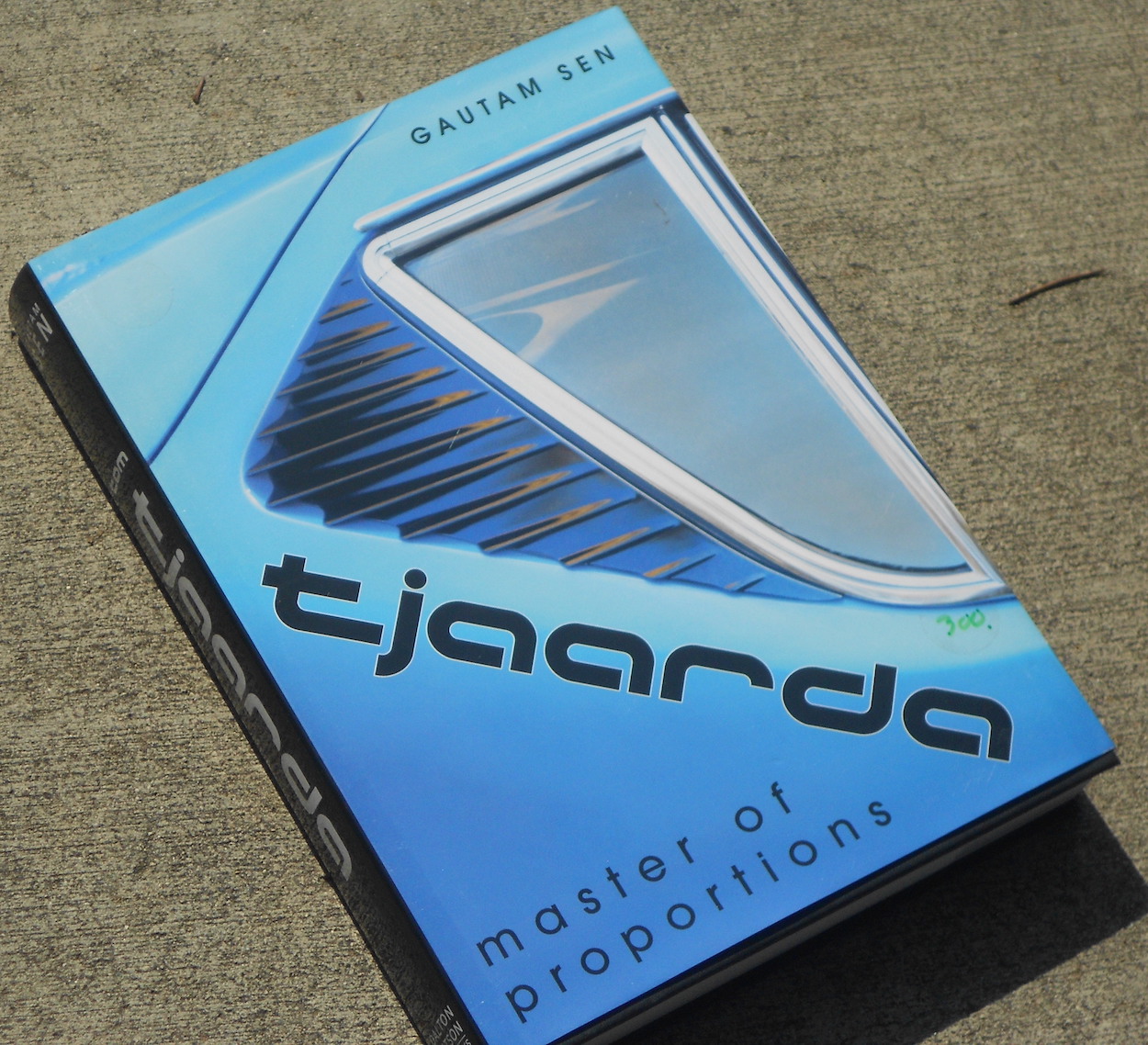
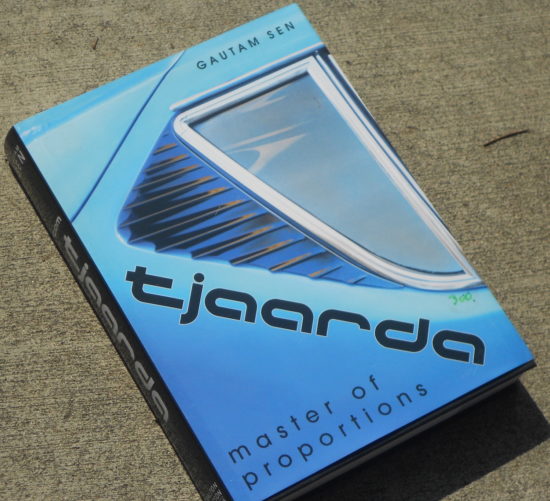
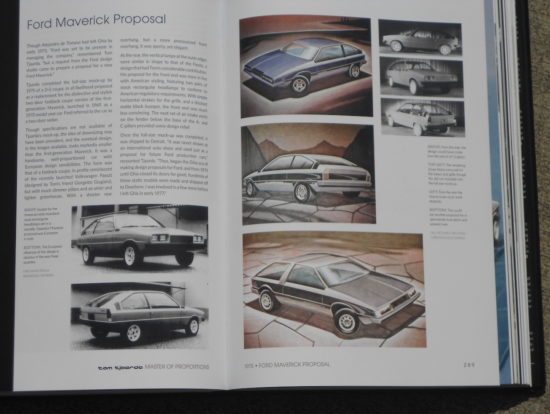
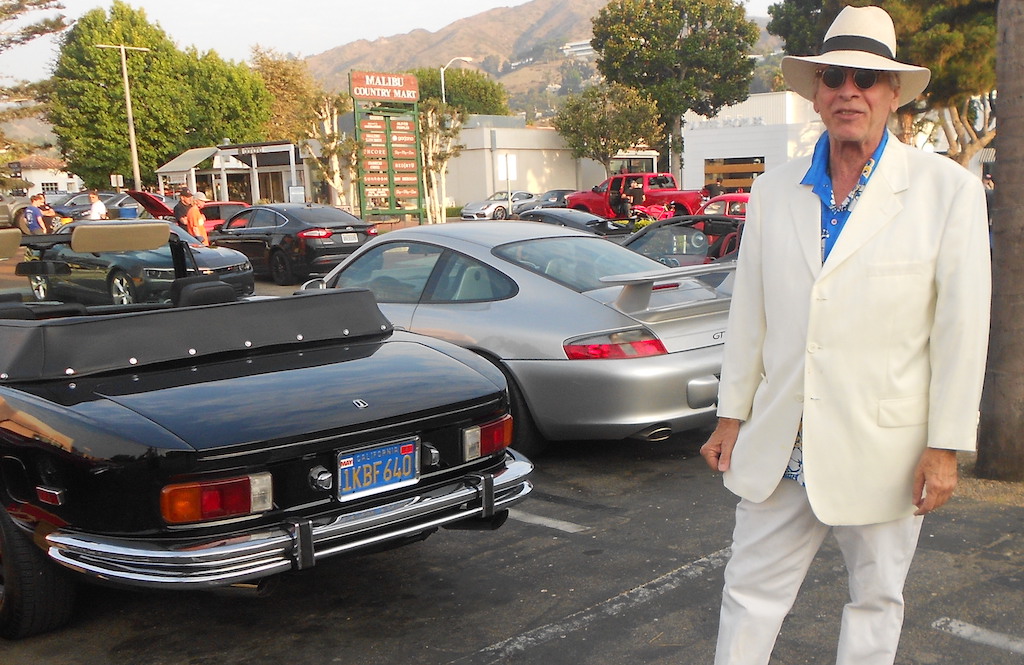
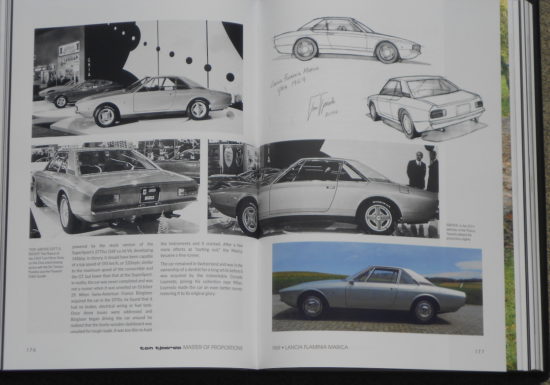


LOOKS LIKE SAME TAIL LIGHTS USED ON AND EARLY, ISO RIVOLTA AND MASERATI MISTRAL.
Thanks for the book review. Not sure I’ll spend $150 for it but ‘I’ve always admired his designs.
I still keep your book on DeTomaso handy for reference, as I do with the books ISORIVOLTA and Intermeccanica.
Designs from the Golden Era, for sure!
Phillip: Sometime I am going to do an article of why some hybrid Italo-american cars have zoomed in value compared to others. Like why aren’t Intermeccanicas worth as much as Iso Grifos? Any opinion?
Good question. Also, why are Grifos so expensive, period?
I love the story of Frank and Paula Reisner and their tenacity to keep designing and building cars in the face of many obstacles. As a “mom and pop shop” they ran their entire business on a shoe string budget and it’s fascinating how well they performed. Although I find the overall body designs of the Italia and the Indra quite satisfying, the attention to some of the design details seem to fall a little short of their Italian contemporaries, and understandably so, and that to me is the most obvious reason why the Intermeccanica values are less than the Iso models, esp. the Grifo.
There are a few reasons why an Iso Grifo is worth more than an Intermeccancia Italia:
1. The people – Renzo Rivolta assembled an excellent team at Iso and augmented it with Giotto Bizzarrini. He partnered with Bertone where Iso benefitted from the design skills of Giugiaro and Gandini.
2. The clubs – The Iso & Bizzarrini Owner’s Club has been active and effective for more than 40 years helping to increase interest in Iso and Bizzarrini cars and leading the way to classes at events like Pebble Beach and The Quail.
3. The media – Iso, especially the Grifo, gets a lot of media attention including from My Car Quest where I have posted several hundred articles with hundreds of photos of all the Iso & Bizzarrini cars for more than 10 years. This media attention creates interest and provides education about the cars.
4. The cars – the Iso Grifo is a special, beautiful and well made car as is the Bizzarrini GT 5300, which evolved from the Iso A3/C. The other Iso cars are also unique with a strong following.
I think the strongest pillar for the Iso community is the club–it changed personnel a few times but there was always a club. Intermeccanica, I think there was years when there was no club. But the biggest mistake they made was too many members customizing their cars so no ordinary member of the public knows what is supposed to be correct; i,e, stock. And the fact Intermeccanica became a firm that builds Porsche replicas seems unsupportive of the best cars they created. Even Mercedes re-made some parts for 60-year old 300SLs. And as far as engineering prowess, Frank Reisner did yeoman’s work but the firm made so many replicas that they are thought of as more of a replica maker, not an automaker as much as the Rivoltas.
I think a nice Italia or Indra is as attractive as a Grifo but it’s hard to beat the shape of an Iso A3/C so ultimately that model was pulling people into the tent of fans.
Getting back to the question posed by Wallace, “Like why aren’t Intermeccanicas worth as much as Iso Grifos? Any opinion”?
I’m don’t think that is a fair comparison. The Grifo is in a class by itself. No other european marque or model from the late 1960s through the early 1970s that has a Detroit drivetrain comes close to the Grifo value, other than the Muira, that I can think of.
But the Intermeccanica Italia value is a little more than the ISO Rivolta, Fidia, or the Lele, and it’s value is also higher than any of the DeTomaso models, and certainly more than the Bitter CD or Jensen Interceptor. The Monteverdi is the outlier, but so few of those models were made. The Indra model rarely comes up for sale but at a recent auction a decent notchback did sell for $40k euros and a fastback model sold 2 years ago for approx. $60k.
What the Intermeccanica owners need to do is get some members up to a stock look
The Pantera owners already have a few but to have a DeTomaso class at Pebble you would need Deauville, Longchamp, Vallelunga and Guara and I don’t know if there’s enough restored examples in US. If they have a class at Pebble or Amelia, all DeTomaso prices will rise.Intermeccabica is a longer shot.